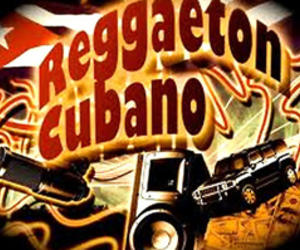The Good and Bad of Reggaeton in Cuba
- Submitted by: manso
- Editorial Articles
- 08 / 23 / 2011

Mario Vizcaino Serrat. A Cuban musicologist attempts to expand a wide-ranging personal study on reggaeton of which she advanced details during a conference on the defects and virtues of that genre, reviled by some and adored by others.
Yarelis Domínguez, research specialist at Havana’s Museo Nacional de la Música (National Museum of Music), highlighted the “resilience” of reggaeton. Some reject this genre, while others revere it, including popular singers and dance music groups from Cuba who cultivate it merged with other variants.
Domínguez analyzes music and text angles of reggaeton including the social side, as she has studied social positions of the leading figures in the genre in Cuba.
From the Caribbean, parts of Latin America and the United States, the genre in Cuba is now living its best time, free of the death that was basically assured after the birth of Jamaican reggae and U.S. rap and hip hop.
But in Cuba it appeared wild, aggressive, wrapped in dirty language that raised waves of protest from intellectuals and the rejection of a public of more demanding tastes. The pelvic and waist movements that distinguish it alarmed the more conservative.
However, these movements come from the rumba, especially the guaguancó (a long, narrative and flirtatious dance), and from earlier African music, so the “crime” of reggaeton followers was continuing the expressions of Cuban culture.
Today, claimed Domínguez, “reggaeton is part of our identity, and nobody knows for how many years it will exist, or how it can even evolve. Who knows if in the next century, they speak about the best songs of this genre during the twenty first century,” she speculated laughingly.
An urban genre, with African roots for its rhythm, but with complex sound and timbre emerging from computerized sequences, Cuban reggaeton registered three initial models that the musicologist discovered in her investigations: Vico C, Don Omar and El General who, although he does not cultivate it, opened the way.
But that was in the beginning. Then it evolved and merged with timba – current Cuban salsa - merengue and conga, “so it can be called cubaton,” suggested the musicologist.
Opposed to opinions that stigmatize it, Domínguez highlighted artistic values in Cuban performers such as Los cuatro and Gente de zona, the latter considered the leading group.
According to the specialist, there is already a concern to keep watch over the texts, even to giving shape to ideas at some level of preparation and reasoning, while keeping the essence of the street. The early awkward scripts have become displays that try to reflect areas and situations of present-day Cuban society, such as living in overcrowded neighborhoods, or the family context.
Domínguez recommends, however, accepting reggaeton as a variant that has a spontaneously playful function, designed to move and dance.
She admits that the melodic point is the poorest and most attacked. It even has little harmonic value, especially at the start, because as it advances it is enriched. This is something that is more interesting to the specialists than to the consumers, of course.
As for the reflection of the relationship between men and women, which reggaeton vociferates as a bond of the submission of women, Domínguez is not sure that Cuba is the same. While women have achieved great independence and obtained rights that protect them, there are still disadvantages that have not been able to be whisked away.
To the surprise of the audience who listened attentively to the exposition of the musicologist, reggaeton done in eastern Cuba is different from that of the west and center, especially in terms of intonation in which nuances are distinguished. These are details that must be considered.
Yanelis Domínguez praised what she called patriotic reggaeton in Cuba, referring to that made by Baby Lores and dedicated to the leader of the Revolution, Fidel Castro, whose image is tattooed on his body.
Source: Cubanow
Comments